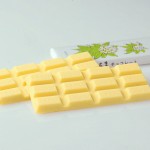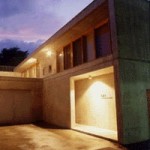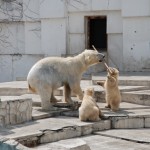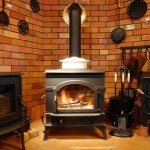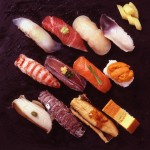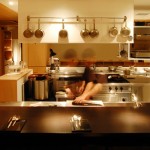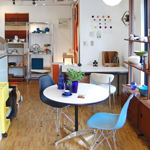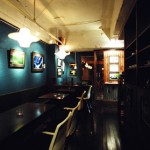北海道神宮Hokkaido Jingu
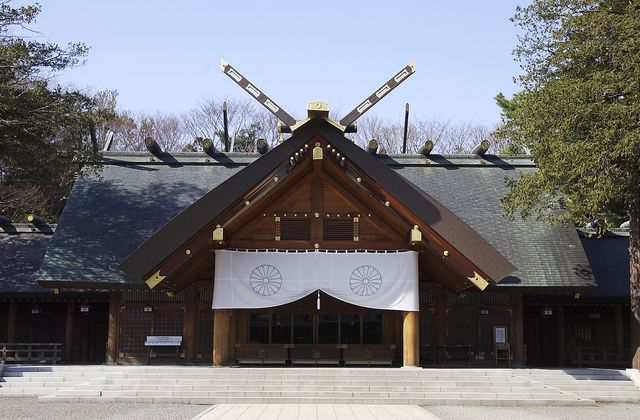
© Sapporo City
Underneath the dying glow of the sunlight, streaming in weakly through tall, imposing trees lined up together in a thick bunch, a wooden temple with delicate gold trimmings stands札幌中心部の喧噪から離れ、円山公園を歩いて行くと、美しい原始林に隠れるように、ひっそりと北海道神宮が佇んでいる。北海道神宮までの道のりは、それ自体が巡礼のようである。神宮を囲む原始林、鳥の声、川の流れなど自然豊かな風景が、現代のめまぐるしい生活を穏やかにしてくれる。
![]()
明治以前までアイヌ民族の先住地で、「蝦夷地」などと呼ばれていたこの島は、明治政府により明治2年に「北海道」と命名された。北海道の開拓・発展の守護神として設けられたのがこの北海道神宮だ。現在の位置に社殿が建てられたのは明治4年。昭和39年には明治天皇を増祀し、その際に社名を創設当時の札幌神宮から現在の北海道神宮に改めた。
![]()
約18万平方メートルある神社の境内は札幌市内の桜の名所としても知られ、花見シーズンには花見客、新年が明けると初詣に来る市民で賑やかとなる。また、札幌最大の祭り、札幌まつりは毎年6月14日から16日に行われる。市内では華やかな山車や神輿が市内を練り歩き、北海道神宮と中島公園では露店が立ち並ぶ。境内では奉納行事により舞や弓道、太鼓などが披露され、日本ならではの華やかな祭りを魅せてくれる。
![]()
北海道神宮
住所:札幌市中央区宮ケ丘474
TEL:011-611-0261
http://www.hokkaidojingu.or.jp
![]()
Text: Bonnie Oeni
Translation: Asami Miyamura quietly and modestly. Tucked away in a beautiful wooded clearing, away from the bustle of Sapporo city life, walking through the Maruyama Park takes you away from civilisation to discover a soothing, silent conversation with nature and the forces behind it.
![]()
Getting to the Hokkaido Shrine is almost a pilgrim’s journey in itself. With nothing but the woods surrounding you, the sounds of birds chirping and the gurgling of the river stream, there is something meditative and restful about visiting this Shinto shrine, especially given the restless pace of modern life.
![]()
Little wonder then, that it becomes a key location intimately linked with the lives of many Japanese, who visit it to gain blessings and peace of mind before major milestones occur, such as the birth of a baby, the early years of a child’s life, marriage, getting into university, or celebrating the dawn of adulthood. This explains the sea of ema (small wooden plaque on which Shinto believers write their prayers) and omikuji (a piece of paper randomly indicating the luck you’ll have for the year ahead, obtained with a small offering) tied to wooden poles at Hokkaido Shrine, filled with the many wishes of people from all walks of life.
![]()
Right up till the Meiji period, Hokkaido was known as Yezo by the Ainu, and had always been their indigenous land. However, when the Meiji government undertook land reclamation, the island was renamed ‘Hokkaido’. Hokkaido Shrine was then established for the purpose of housing guardian deities that would oversee the reclamation and development of Hokkaido. The present main building of the shrine was built in the 4th year of the Meiji period. In the 39th year of the Showa period, the Meiji emperor was enshrined, and the shrine, previously called Sapporo Shrine, was renamed Hokkaido Shrine.
![]()
The shrine is most popular during the cherry blossom season for hanami (sakura-viewing) sessions, as well as during the Japanese New Year, in which the customary hatsumōde (first shrine visit of the year) is done. During the hatsumōde, new o-mamori (amulets) are bought for protection and to ward off bad luck for the new year, while old ones are returned to the shrine to be burnt, creating a meaningful tradition focused on the cycle of starting anew.
![]()
Every year, the main festival at the shrine, the Sapporo Festival, is organised from June 14 to 16, with much pomp and extravagance. During the festival, a long line of strong people bearing mikoshi (opulently decorated portable Shinto shrines, believed to serve as the vehicle of a divine spirit) on ther shoulders parade down the street leading to the shrine, promising an activity filled with spectacle, colour and excitement.
![]()
Hokkaido Jingu
Address: 474 Miyagaoka, Chuo-ku, Sapporo
Tel: 011-611-0261
http://www.hokkaidojingu.or.jp
![]()
Text: Bonnie Oeni北海道神宮
地址:札幌市中央区宮ケ丘474
电话:011-611-0261
http://www.hokkaidojingu.or.jp
